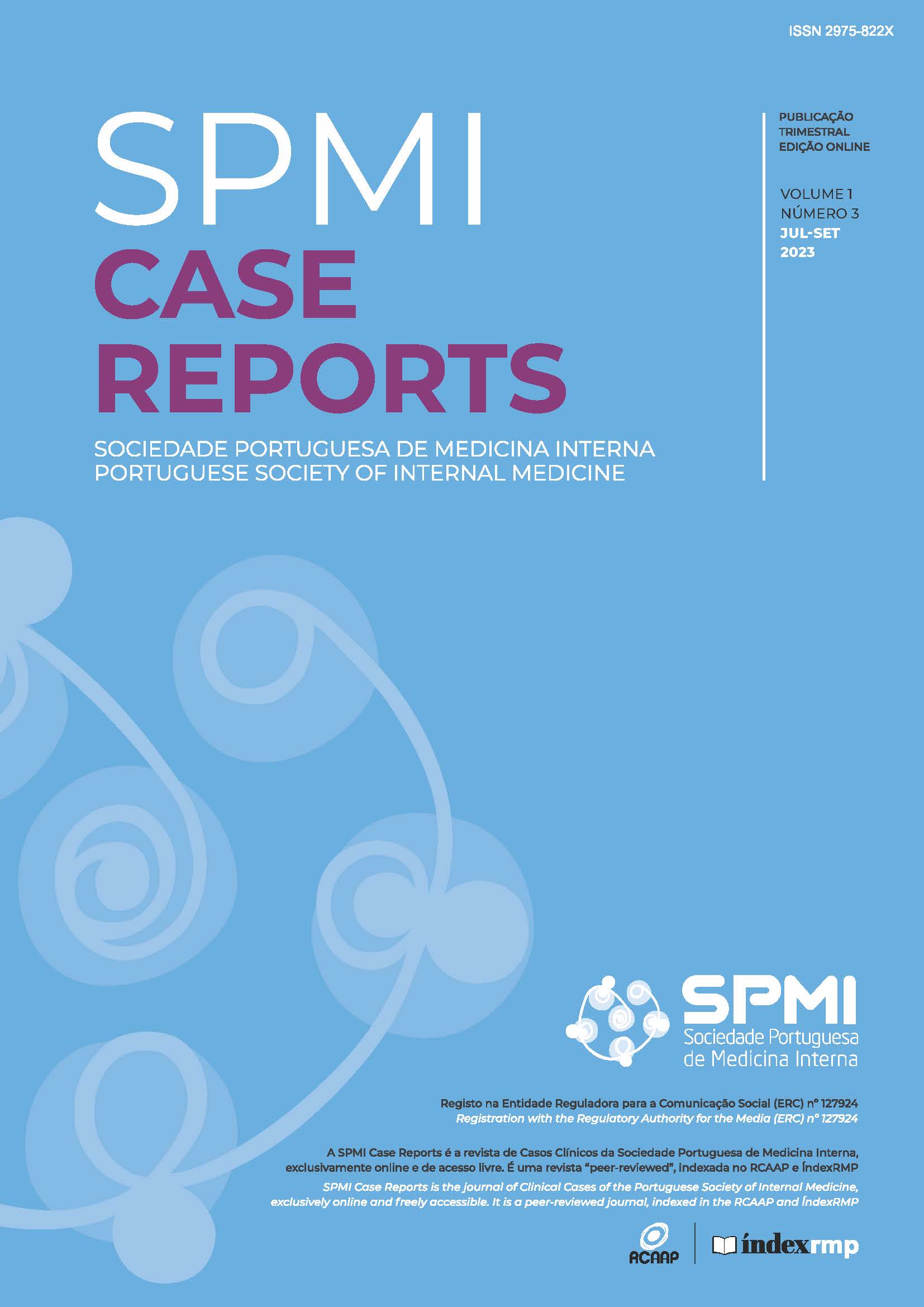Arterial Hypertension: A Vicious Circle Clinical Case
DOI:
https://doi.org/10.60591/crspmi.71Keywords:
Glycyrrhiza, Hypertension/chemically inducedAbstract
Hypertension is an important cardiovascular risk factor and is associated with high morbidity and mortality. About 10% of patients have secondary causes and the correct diagnosis is essential for the correct management of the patient.
This is the case of a 55-year-old previously healthy man, who presents with arterial hypertension difficult to manage during hospital admission, already with established kidney and cardiac injury. The etiological investigation highlighted the regular consumption of liquorice, raising the hypothesis of a hypertension secondary to liquorice. However, the established renal and cardiac lesions could not rule out an undiagnosed essential hypertension, exacerbated by liquorice.
Given the diagnosis of hypertension in a healthy patient, the etiological study and the investigation of target organ injury are essential. The correct clinical evaluation, with an exhaustive clinical history, and raising diagnostic hypothesis with a critical spirit continue to be the pillar of a correct medical evaluation.
Downloads
References
2018 ESC/ESH Guidelines for the management of arterial hypertension
Diaconu CC, Dediu GN, Iancu MA. Drug-induced arterial hypertension - a frequently ignored cause of secondary hypertension: a review. Acta Cardiol. 2018:1-7. doi: 10.1080/00015385.2017.1421445
Adamczak M, Wiecek A. Food Products That May Cause an Increase in Blood Pressure. Curr Hypertens Rep. 2020;22:2. doi: 10.1007/s11906-019-1007-y.
Varma R, Ross CN. Liquorice: a root cause of secondary hypertension. JRSM Open. 2017;8:2054270416685208. doi: 10.1177/2054270416685208.
Angus L, Stranks J. Natural liquorice-induced pseudoaldosteronism causing severe hypokalaemia, hypertension and rhabdomyolysis. Intern Med J. 2020;50:502-3. doi: 10.1111/imj.14796.
Penninkilampi R, Eslick EM, Eslick GD. The association between consistent licorice ingestion, hypertension and hypokalaemia: a systematic review and meta-analysis. J Hum Hypertens. 2017;31:699-707. doi: 10.1038/jhh.2017.45.
Luís Â, Domingues F, Pereira L. Metabolic changes after licorice consumption: A systematic review with meta-analysis and trial sequential analysis of clinical trials. Phytomedicine. 2018;39:17-24. doi: 10.1016/j.phymed.2017.12.010.
Catena C, Colussi G, Brosolo G, Verheyen N, Novello M, Bertin N, et al. Long-term renal and cardiac outcomes after stenting in patients with resistant hypertension and atherosclerotic renal artery stenosis. Kidney Blood Press Res. 2017;42:774-83. doi: 10.1159/000484299.
Meyrier A. Nephrosclerosis: a term in quest of a disease. Nephron. 2015;129:276-82. doi: 10.1159/000381195.
Seccia TM, Caroccia B, Calò LA. Hypertensive nephropathy. Moving from classic to emerging pathogenetic mechanisms. J Hypertens. 2017;35:205-12. doi: 10.1097/HJH.0000000000001170.
Meyrier A. Nephrosclerosis: update on a centenarian. Nephrol Dial Transplant. 2015;30:1833-41. doi: 10.1093/ndt/gfu366.
Downloads
Published
How to Cite
License
Copyright (c) 2023 Isabel Montenegro Araújo , Inês Branco Carvalho, Margarida Pimentel Nunes, David Prescott, Sofia Mateus, António Martins Baptista

This work is licensed under a Creative Commons Attribution 4.0 International License.







